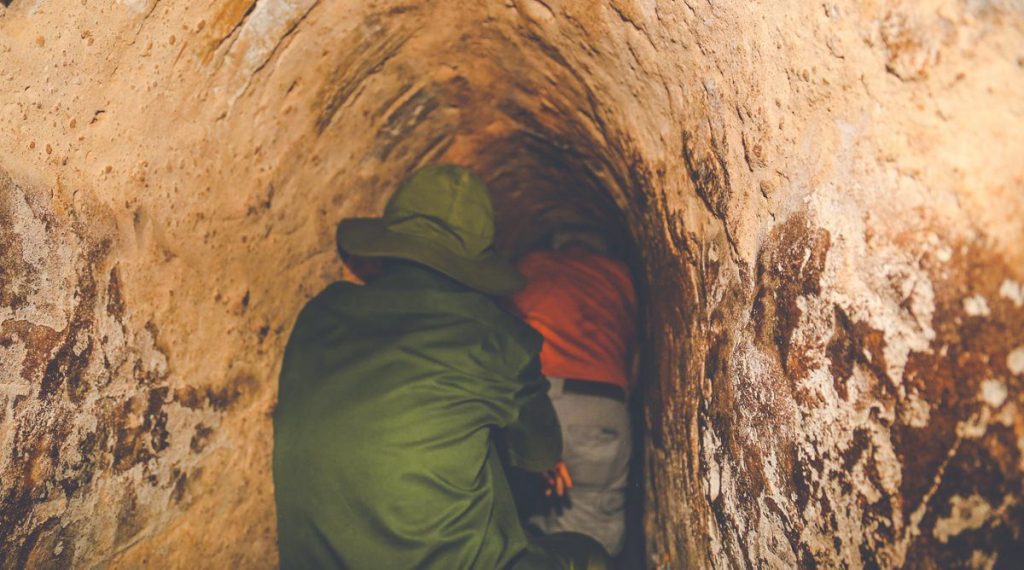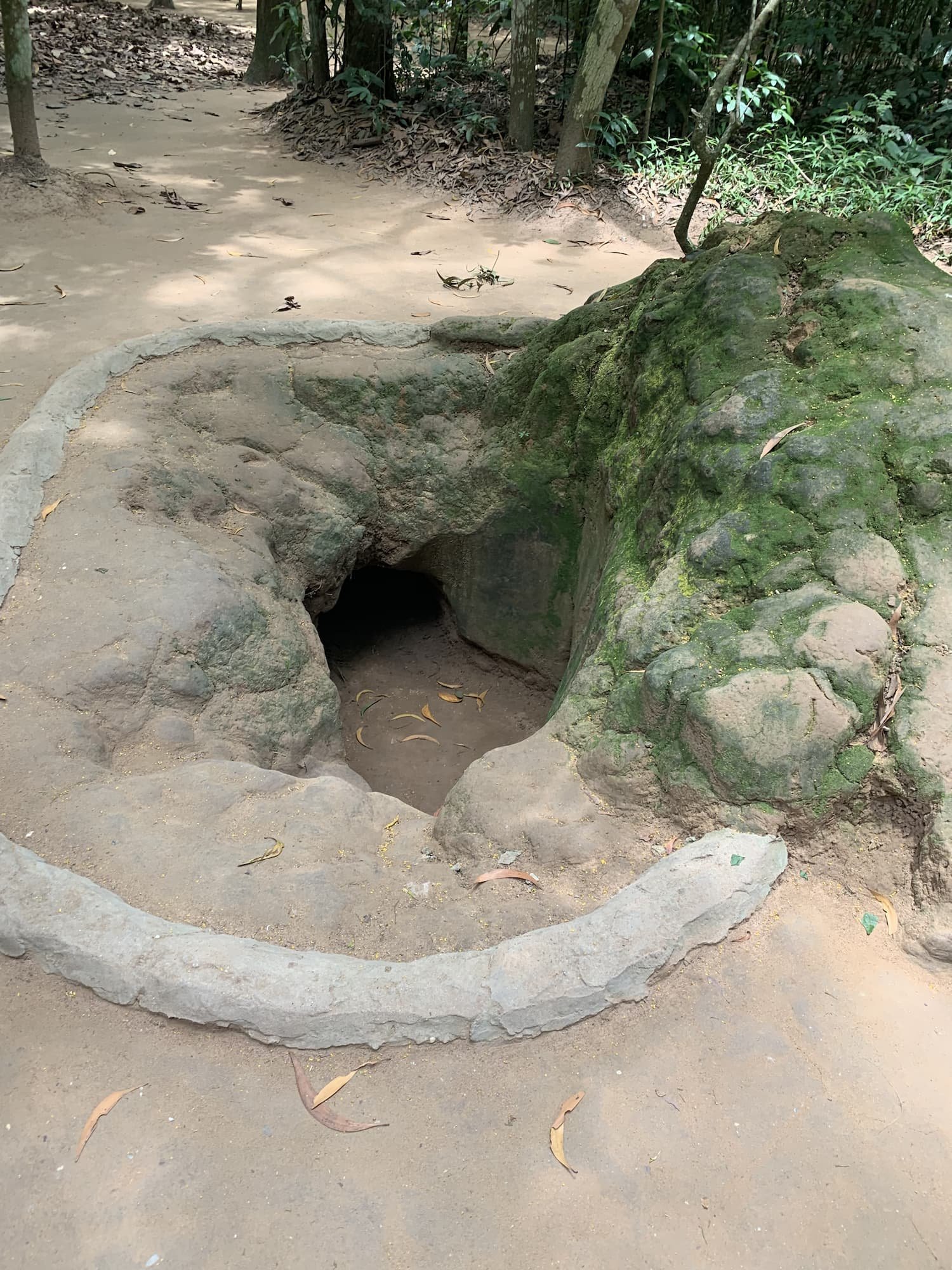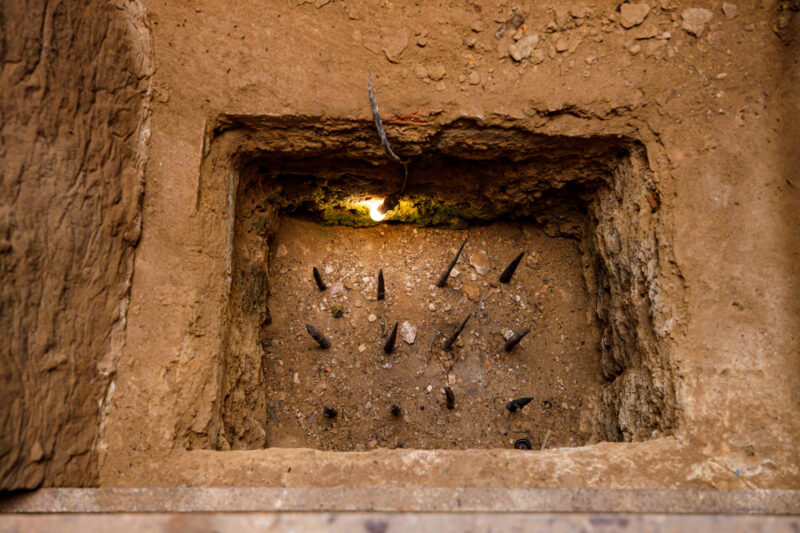Table of Contents
Located just 70 kilometers northwest of Ho Chi Minh City, the Cu Chi Tunnel in Vietnam is a network of underground tunnels that played a crucial role in the Vietnam War. This intricate system of tunnels served as a base for the Vietnamese soldiers, providing them with shelter, communication routes, and supply lines during the war. Today, the Cu Chi Tunnel stands as a symbol of Vietnamese resistance and resilience, attracting thousands of tourists every year. In this blog post, we will delve into the history, significance, construction, and life inside the Cu Chi Tunnel, and uncover its secrets and impact on Vietnam’s war strategy.
History of Cu Chi Tunnel in Vietnam

The Cu Chi Tunnel in Vietnam has a long and rich history dating back to the late 1940s when the Vietnamese were fighting against French colonial rule. The initial tunnel system was built by the Viet Minh, who used it as a hiding place from the French army. However, it wasn’t until the Vietnam War that the tunnels gained strategic importance.
During the Vietnam War, the Cu Chi Tunnel was used by the Viet Cong, a communist guerrilla force, to launch surprise attacks on the American and South Vietnamese troops. The tunnel system was expanded and improved upon, stretching over 250 kilometers and reaching all the way to the Cambodian border. It became an essential part of the Viet Cong’s war strategy, allowing them to move undetected and launch ambushes on their enemies.
Despite facing constant bombing and chemical warfare, the Vietnamese soldiers continued to use the tunnels, proving their determination and resilience. After the war ended in 1975, the Cu Chi Tunnel was opened to the public as a tourist attraction, showcasing the ingenuity and bravery of the Vietnamese people during the war.
The Construction and Design of Cu Chi Tunnel in Vietnam
The Cu Chi Tunnel is an impressive feat of engineering, with its complex network of tunnels, chambers, and traps. The tunnels were dug by hand using simple tools like shovels and hoes, and it took years to complete the entire system. The Vietnamese soldiers worked tirelessly, often in dangerous conditions, to create this underground maze.
The tunnels were designed to be narrow and low, measuring only 0.8 meters wide and 1.2 meters high. This was to prevent the enemy from entering and to make it difficult for them to move around once inside. The tunnels were also built in a zigzag pattern, making it hard for the enemy to follow and increasing their chances of getting lost.
To protect the tunnels from being discovered, the entrances were cleverly hidden under bushes, termite mounds, or trapdoors. Some of the entrances were even located underwater, accessible only through a secret hatch. The tunnels were also equipped with booby traps and tripwires to deter any intruders.
Significance of Cu Chi Tunnel in Vietnam’s War History

The Cu Chi Tunnel in Vietnam played a crucial role in the Vietnam War, serving as a base for the Viet Cong and helping them to achieve victory against the American and South Vietnamese forces. The tunnels provided the Viet Cong with a safe haven, allowing them to hide from aerial bombings and launch surprise attacks on their enemies.
The tunnel system also served as a communication and supply route for the Viet Cong, enabling them to transport weapons, food, and medical supplies without being detected. It also allowed them to move troops quickly and efficiently to different parts of the country, making it difficult for the enemy to track their movements.
Moreover, the Cu Chi Tunnel was a symbol of the Vietnamese people’s determination and resilience in the face of adversity. Despite facing constant bombing and chemical warfare, the Vietnamese soldiers continued to use the tunnels, showcasing their unwavering spirit and bravery.
Impact of Cu Chi Tunnel on Vietnam’s War Strategy
The Cu Chi Tunnel had a significant impact on Vietnam’s war strategy, helping them to achieve victory against the American and South Vietnamese forces. The tunnel system allowed the Viet Cong to launch surprise attacks on their enemies, causing confusion and chaos among the troops.
The tunnels also played a crucial role in the Tet Offensive of 1968, a major turning point in the Vietnam War. During this offensive, the Viet Cong launched a series of coordinated attacks on over 100 cities and military bases, catching the American and South Vietnamese forces off guard. The tunnels played a vital role in this offensive, allowing the Viet Cong to move troops and supplies undetected.
Moreover, the Cu Chi Tunnel forced the American forces to change their tactics, as they were unable to defeat the Viet Cong through conventional warfare. This led to the use of chemical warfare, such as Agent Orange, which caused severe damage to the environment and the health of the Vietnamese people.
Exploring the Cu Chi Tunnel in Vietnam: A Tourist’s Guide

Today, the Cu Chi Tunnel is one of the most popular tourist destinations in Vietnam, attracting thousands of visitors every year. It offers a unique opportunity to experience the life of the Vietnamese soldiers during the war and learn about their struggles and triumphs.
A Must-Visit Destination for History Enthusiasts
For history enthusiasts, the Cu Chi Tunnel in Vietnam is a must-visit destination. The site has been preserved and restored to its original state, giving visitors a glimpse into the harsh conditions that the Vietnamese soldiers endured during the war. Visitors can explore the tunnels, crawl through the narrow passages, and even try their hand at shooting an AK-47 rifle.
The site also features a museum with displays of weapons, traps, and artifacts used during the war. Visitors can also watch a short film about the history of the Cu Chi Tunnel before embarking on a guided tour of the site.
Uncovering the Secrets of Cu Chi Tunnel in Vietnam
The Cu Chi Tunnel is full of secrets waiting to be uncovered. During the tour, visitors will learn about the ingenious traps and weapons used by the Vietnamese soldiers to defend their territory. These traps were designed to maim or kill the enemy, and they were often hidden in plain sight, making them difficult to detect.
Visitors can also explore the underground bunkers and living quarters, where the Vietnamese soldiers spent most of their time. The cramped and dark tunnels give visitors a sense of the harsh conditions that the soldiers had to endure while living and fighting underground.
Life Inside the Cu Chi Tunnel: Stories from Survivors
One of the most fascinating aspects of the Cu Chi Tunnel is hearing stories from the survivors who lived and fought in the tunnels during the war. Many of these survivors now work as guides at the site, sharing their personal experiences and giving visitors a firsthand account of life inside the tunnel.
These stories offer a unique perspective on the war and provide insight into the daily struggles and sacrifices made by the Vietnamese soldiers. Visitors can also interact with the survivors and ask questions, making it a truly immersive experience.
Preserving the Legacy of Cu Chi Tunnel in Vietnam

The Cu Chi Tunnel is not just a tourist attraction; it is a significant part of Vietnam’s history and a symbol of the country’s resilience and determination. As such, efforts have been made to preserve and protect this historical site for future generations.
The tunnels have been reinforced and restored to ensure the safety of visitors, while still maintaining its original design and structure. The site is also constantly monitored to prevent any damage or destruction caused by natural elements or human activity.
Moreover, the Cu Chi Tunnel has been recognized as a National Historical Monument by the Vietnamese government, highlighting its importance in the country’s history. It has also been nominated for UNESCO World Heritage status, which would further cement its significance and ensure its preservation for years to come.
Conclusion

The Cu Chi Tunnel in Vietnam is not just a tourist attraction; it is a symbol of the country’s resistance and resilience during the Vietnam War. This intricate system of tunnels played a crucial role in the war, allowing the Vietnamese soldiers to outsmart and defeat their enemies. Today, the Cu Chi Tunnel stands as a testament to the bravery and determination of the Vietnamese people, and it continues to attract visitors from all over the world who want to learn about its history and uncover its secrets.